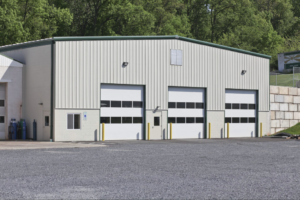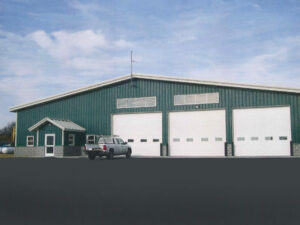Embracing the Future of Construction: Why Prefabricated Buildings Are the Best Choice

The construction industry has undergone a remarkable transformation in recent years, with technology playing a pivotal role in revolutionizing traditional building practices. Among the innovations that have gained widespread popularity, prefabricated buildings stand tall as a shining beacon of the future.
1. Speed and Efficiency
One of the most significant advantages of prefabricated buildings is their unparalleled speed and efficiency in construction. Unlike conventional on-site construction, prefabrication involves the manufacturing of building components in a controlled factory setting. This process streamlines the entire construction process, minimizing weather-related delays and increasing construction speed by up to 50%.
The use of advanced manufacturing techniques and automated machinery allows for precise fabrication, reducing the chance of errors during construction. Additionally, prefabricated buildings can be assembled quickly on-site, resulting in a significantly shorter overall project timeline. This speed factor is particularly appealing to those seeking to save time and resources, making prefabricated buildings the ideal solution for time-sensitive projects.
2. Sustainability and Environmental Benefits
In an era where environmental consciousness is paramount, Power Steel Buildings prefabricated buildings offer an eco-friendly alternative to conventional construction methods. The controlled factory environment enables better resource management, waste reduction, and recycling of any of our scrap materials. However, all of the materials going into any of our structures are nothing but top-grade.
The optimized production process minimizes the environmental impact, leading to a smaller carbon footprint compared to traditional construction. Furthermore, prefabricated buildings often incorporate green building practices, such as energy-efficient insulation, renewable energy sources, and sustainable materials. As a result, these structures promote sustainability and contribute positively to the environment.
3. Versatility in Design and Functionality
Gone are the days when prefabricated buildings were limited to simple and uninspiring structures. Today, advancements in technology have enabled architects and engineers to unleash their creativity with prefabricated construction. The flexibility and adaptability of prefabricated building systems allow for a wide array of design possibilities, catering to diverse needs and architectural preferences.
Whether you require an office space, warehouse, residential complex, or even a multi-story building, prefabricated construction can be tailored to fulfill specific requirements. From contemporary esthetics to traditional charm, prefabricated buildings can accommodate a range of styles, ensuring that your vision becomes a reality.
4. Consistent Quality and Durability
One common misconception about prefabricated buildings is that they compromise on quality. On the contrary, Power Steel Buildings’ prefabricated components are manufactured under strict quality control standards, adhering to rigorous testing protocols. This process ensures that each element meets or exceeds industry standards, guaranteeing a level of durability that stands the test of time.
Unlike on-site construction, where quality might vary depending on labor and environmental factors, prefabricated buildings maintain a consistent level of quality throughout the entire structure. The combination of high-quality materials, precision manufacturing, and controlled assembly processes results in robust and long-lasting buildings that can endure even the harshest conditions.
5. Cost-Effectiveness
Cost considerations are at the heart of any construction project. Power Steel Buildings offer a significant advantage in terms of cost-effectiveness. The streamlined production process reduces labor expenses, and faster construction timelines mean less money spent on project management and supervision.
Additionally, the predictability of construction costs with prefabricated buildings allows for better budget planning and financial management. Lower transportation costs due to the compact nature of prefabricated components also contribute to overall cost savings.


